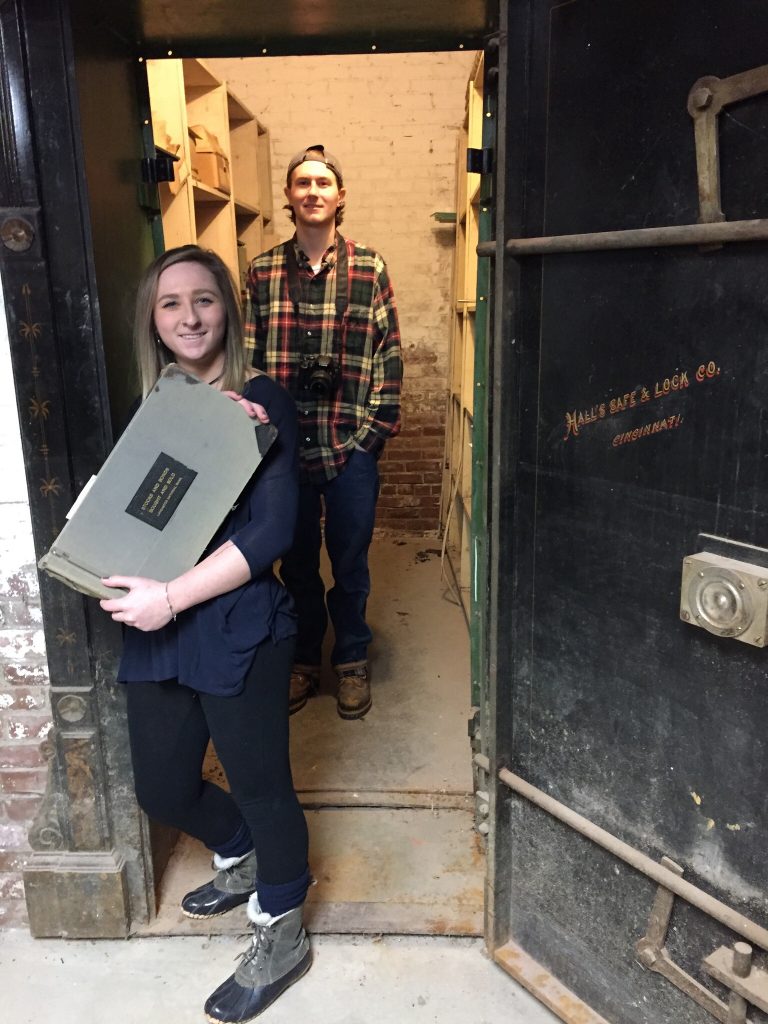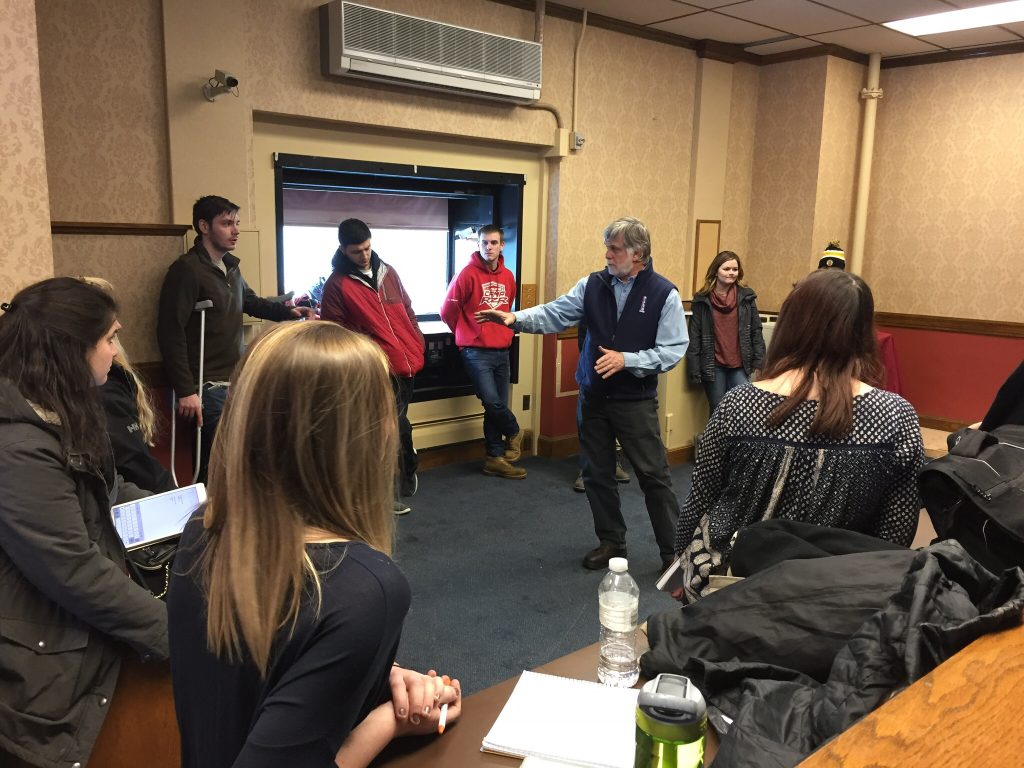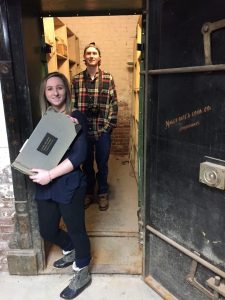Community Partners: Managing Expections (including our own!)

In this second post for the CoLab’s Project-Based Learning Series, Business and Marketing faculty member Roy Stever continues his discussion of developing the North Country Community Development project with his colleagues and students. If you haven’t read Installment One, start there!
In course preparation, the completion of a syllabus marks one shining moment of perfection, as all that remains is our flawless delivery. Or so we might tell ourselves at the start of each new semester. Once we introduce a partner to course planning, however, we may need to rethink “perfection”. In fact, it is likely that partners will periodically confound all our good planning. The good news is that these excursions – a change of objectives, a new deadline, a mixed message – will benefit our students as they learn about the “real world”. In that sense, simply following a well-planned syllabus falls short of the expectation of full academic preparation and it is partners who provide us an important portal to experiential learning.

The challenge of finding partners for the North Country Community Development (NCCD) initiative – roughly ten over three years – has varied widely. That is good news since there is no one set model and many approaches can work. Community partnerships have ranged from the obvious to the unexpected, and from close-by to far-away. Some dropped in our laps while others took months of intensive cultivation. We have drawn our partners from the ranks of entrepreneurs, non-profits, municipal organizations and loose assemblages of thought-leaders. Some prospects have never reached active status and remain in the stable of untapped projects.
You may learn of prospective partners through word of mouth, research, a news article, general reputation or, perhaps, they will appear in front of you, unannounced. If your program has an advisory board, networking with its members can be quite fruitful. Also, take a close look at the alumni base within your field of exploration, perhaps as part of a wider advanced search of Linked-In. All of the successful projects, though, grew from a meaningful meeting of the minds and a clear sense of mutual benefits well in advance of that first meeting with students.
It does not really matter how you find them but what happens next is crucial.
Initially, you will to make the contact – directly, enthusiastically and with complete transparency. From the start, it will be important to not oversell the capabilities of your student group and not undersell your expectations of the partner. There will likely follow several conversations through which you first explore needs and opportunities through careful listening, then identify a possible path forward. A second “working” stage, face-to-face, is likely to uncover key insights that lie beneath the obvious overarching project mission – unforeseen dimensions that will allow you to build out exciting learning objectives. The third and confirming stage becomes a moment of truth in which the parties declare both what they expect to deliver and what they expect in return.
What you expect to deliver depends entirely on your own programmatic value statement, whether that is based on research, idea development, delivery of knowledge and/or skills, etc. These “deliverables” should be clear to the partner too. Examples of prior student work, projects etc. will go a long way to illuminating the subject. What you expect in return should also be clarified, meeting the following generalized guidelines:
- The partner should voluntarily express, in their own words, an interest in students, student-learning and the greater success of PSU. If this does not happen, you may need to prompt the partner. The central importance of students must not be an “afterthought.”
- You need to share the desired Student Learning Outcomes (SLO’s) for the engagement, including the general metrics by which you will assess student success. The partner has a shared interest in making this work.
- Both you and the partner need to commit to the timeline, interim and final milestones, project assessment and a method of “checking-in”.
- More will be said in a future post regarding a Memorandum of Understanding (MOU) between PSU and the Partner. Some may view this document with disdain as bureaucratic, although a well-crafted MOU can raise the sense of obligation on the part of both parties while also surfacing possible risk issues and limiting liability.
A few cautions are noteworthy as you evaluate partnerships:
- A shallow definition of SLO’s may indicate that there is simply not enough value to pursue the opportunity. Simply expecting the learning to happen as you go is more likely to lead to a “sand-box” experience, the results of which are impossible to predict.
- Beware of organizations who are in distress, or simply rudderless, as the expectations will be very high and chances of meaningful impact very low. If they have been unable to find success, it is unlikely that your students will be much more successful.
- Projects funded beyond the level of PSU’s cost and/or a modest return on student costs of tuition represent a risk that PSU becomes an unwitting partner in advocacy or “selling ideas”, rather than experiential learning. These programs, if pursued, need to be guided by an explicit written statement of individual and joint interests that becomes a guiding document in the event of ethical concerns. All PSU participants, students included, should be pre-trained through CITI.
Finally, the best partners are often leaders within their “community” or “competitive space”. That does not necessarily mean they are the biggest, wealthiest or most successful. Rather, leadership implies that they have something to teach our students, and us. Happily, most potential partners, even the leaders, are in some sort of deficit organizationally, and that is where we come in. Students, under our guidance, have the ability to work on those issues that may round out a business model, a new market opportunity or simply address an organizational Achilles heel. It is the imbalance in these organizations that provides an opportunity for students to experience both excellence and improvement.

Finding good partners is among the most perplexing of topics in experiential learning models, without question. An “eyes-open”, listening approach coupled with a strong sense of your students’ learning opportunity are at the heart of solving this puzzle. Make it meaningful, not necessarily perfect!


